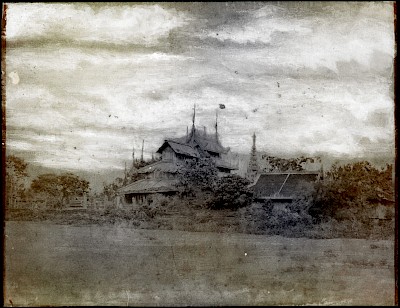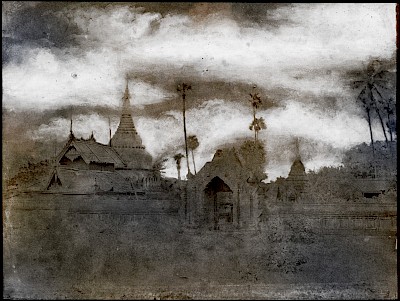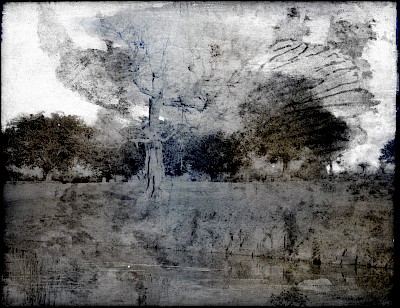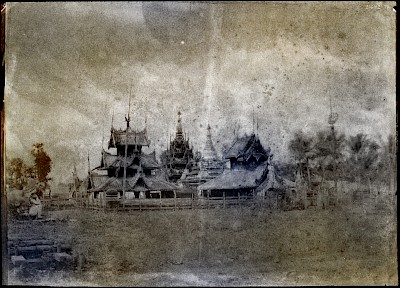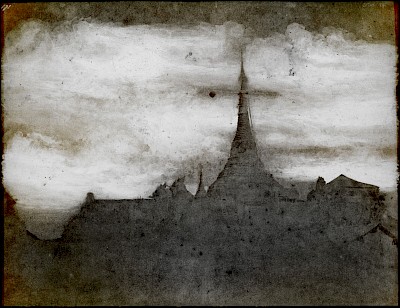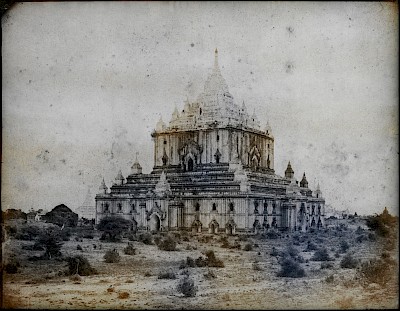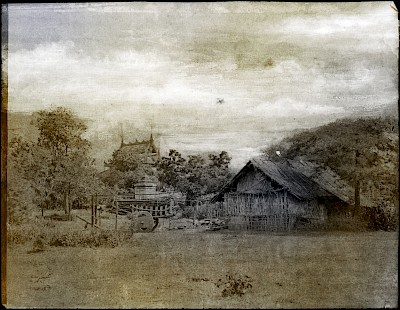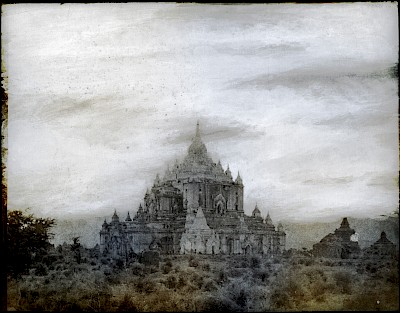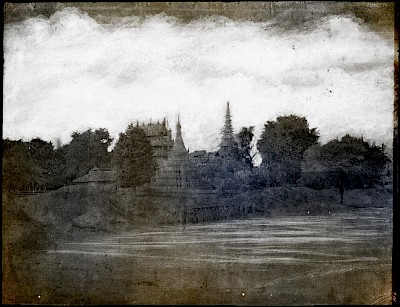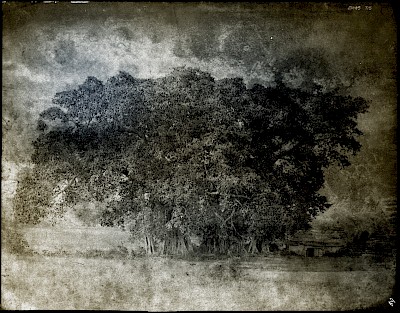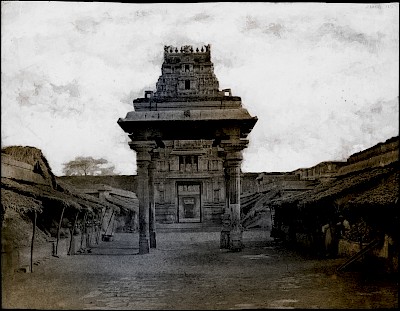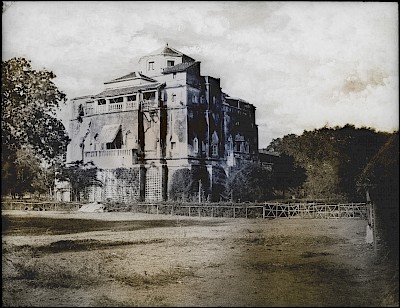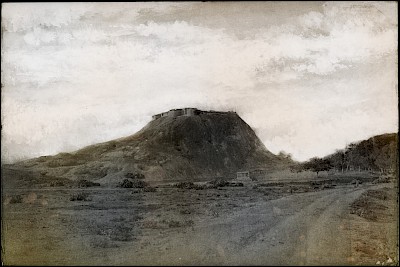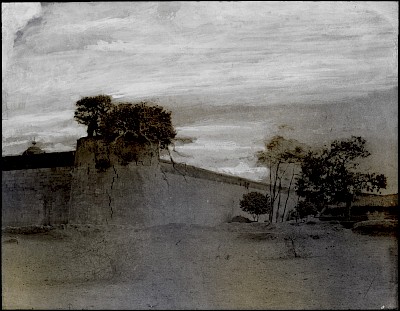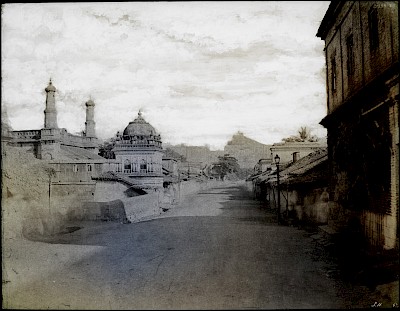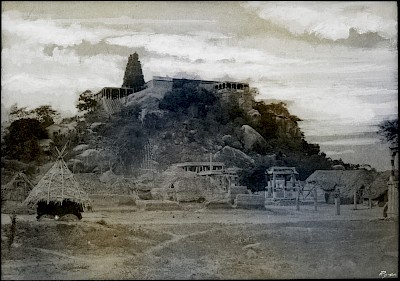Tripe
Paper negatives, which Captain Linnaeus Tripe (1822–1902) had produced on behalf of the British government in Burma and Madras between 1856 and 1862 and which are now in the archives of the Victoria & Albert Museum in London, were the starting point for the “Tripe” series.
Thomas Ruff was able to view the surviving negatives in the format 30.5 x 38 cm and selected several of these for his own work. All of them showed clear signs of aging; some were damaged by mold, water, or chemical changes. In many of them, the thin layer of wax that had been applied to make the paper more transparent showed clear signs of creasing or breaking. Ruff had the negatives digitally reproduced and then converted them into positives, inverting the brownish hue of the negative to a cyan blue. He duplicated these positives and changed the color of the duplicates to the brown tone of the negatives. He superimposed the two positive images as digital layers and removed parts of the layer of the brownish image so that the coloration of the bluish layer partially shines through. In a second step, he enlarged the images so that the texture of the paper and all the processing, damage, and changes become visible.

Tripe
Paper negatives, which Captain Linnaeus Tripe (1822–1902) had produced on behalf of the British government in Burma and Madras between 1856 and 1862 and which are now in the archives of the Victoria & Albert Museum in London, were the starting point for the “Tripe” series.
Thomas Ruff was able to view the surviving negatives in the format 30.5 x 38 cm and selected several of these for his own work. All of them showed clear signs of aging; some were damaged by mold, water, or chemical changes. In many of them, the thin layer of wax that had been applied to make the paper more transparent showed clear signs of creasing or breaking. Ruff had the negatives digitally reproduced and then converted them into positives, inverting the brownish hue of the negative to a cyan blue. He duplicated these positives and changed the color of the duplicates to the brown tone of the negatives. He superimposed the two positive images as digital layers and removed parts of the layer of the brownish image so that the coloration of the bluish layer partially shines through. In a second step, he enlarged the images so that the texture of the paper and all the processing, damage, and changes become visible.






